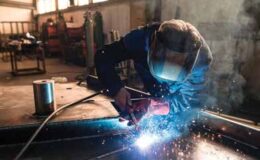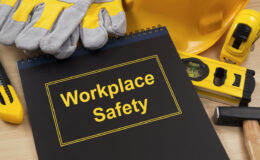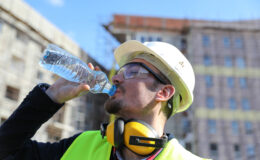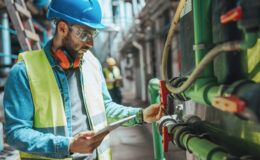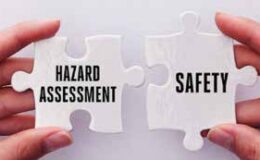By Chris Demeter, Senior Loss Control Consultant
The term “robot” readily evokes a mental image to most people. Depending on your age, it could be R2D2 from the Star Wars movies, the Mars Land Rover, or you may have iRobot Roomba vacuum cleaner. In 1954, George Devol developed the first programmable Robot. It weighed two tons and was controlled by a program on a magnetic drum. Nowadays, the number and type of robots are changing rapidly.
Industrial robots are designed to move materials, as well as perform a variety of programmed tasks in manufacturing and production settings. They are often used to perform duties that are dangerous or unsuitable for human workers, such as repetitious work that causes boredom and could lead to injuries because of the inattentiveness of the worker.

Industrial robots are able to significantly improve product quality. Applications are performed with precision and superior repeatability on every job. This level of reliability can be difficult to accomplish any other way. Since employees are not working in a potential hazardous area, robots also increase workplace safety.
On April 27th, MTM sponsored and hosted for a number of our policyholders, a robotic training seminar by Jeff Fryman of the Robotic Industries Association (RIA). Founded in 1974, RIA is the only trade group in North America organized specifically to serve the robotics industry. Member companies include leading robot manufacturers, users, system integrators, component suppliers, research groups, and consulting firms.
According to RIA, there are more than 1.5 million industrial robots safely operating in factories worldwide, and the robotics industry can take pride in its impressive safety record. However, like most machines, robots can be dangerous when they are deployed improperly or used carelessly. For over thirty years, RIA has taken a lead role in assuring that the robotics industry continues to proactively assess the safety environment and provide safety resources as robotic applications continue to expand.
If you have dealt with MIOSHA in the past, you probably heard the term “Safety Standards”. Michigan has dozens of Safety standards that are enforceable by MIOSHA. Safety standards are standards designed to ensure the safety of products, activities or processes, etc. They may be advisory or compulsory and are normally laid down by an advisory or regulatory body that may be either voluntary or statutory. While Michigan does not have a Robotic Standard, they will often refer to ANSI and ISO Standards for enforcement. Since the scope of the ANSI and ISO Robotic Standards are so vast, it would be impossible to cover them all in detail in this article.
However, I would recommend that a detailed risk assessment be performed to ensure the safety of workers who operate, service, and maintain the robotics system. A risk assessment will identify possible hazards, determine risk reduction requirements, reason possible solutions to reduce risk, and validate proposed solutions. Personnel who program, operate, maintain, or repair robots or robot systems should receive adequate safety training and be able to demonstrate competency in performing their jobs safely.
Most serious injuries occur when a person gets too close to the operating robot. Stay outside the working envelope radius when robots are in use. An effective safeguarding system protects not only operators but also engineers, programmers, maintenance personnel, and any others who work on or with robot systems and could be exposed to hazards associated with a robot’s operation. A combination of safeguarding methods may be used. Redundancy and backup systems are especially recommended, particularly if a robot or robot system is operating in hazardous conditions or handling hazardous materials.
Enjoy your summer and if you have any questions regarding your robots, contact you loss control consultant.

